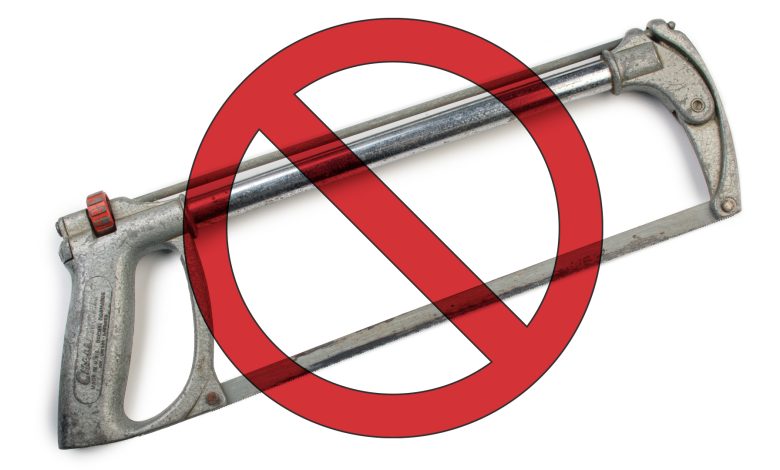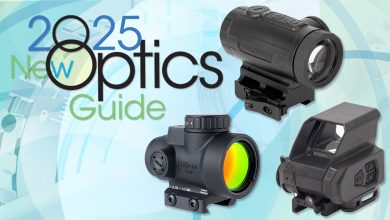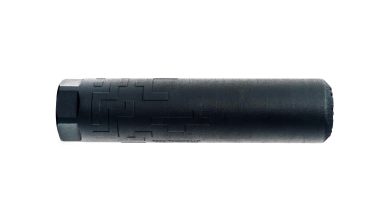Rifles: Discreet Modifications

Nostalgia amongst firearm enthusiasts typically shows up in the form of collectible guns, well-worn “shooters” with personal or historical ties and reproduction (or retro) firearms. Collectibles are wisely appreciated by eye, but seasoned keepers and reproduction arms can still be enjoyed in-hand. Sometimes, these shootable rifles can also benefit from upgrades.
With the possible exception of certain bolt-action rifles, making substantive, but discreet, improvements to older or period-correct rifles can be challenging. Lever-actions are particularly tough to upgrade when trying to maintain an original look. Adding a camo dip, hammer-spur extension, paracord-wrapped lever, skeletonized stock and forearm-mounted ammunition carrier to a saddle-worn, pre-’64 Winchester Model 1894 will certainly add to its practicality, but it will also suck a bunch of classic right out of the rifle.
I ran into this problem with a family member’s plain-ol’ Marlin Model 30AS several years ago. We found his budget version of Marlin’s classic lever gun in a condition that made its low price seem exorbitant. But, my in-law’s fond memories made him want to see this one transformed into the same, traditional-looking and good-shooting rifle as a previous Marlin he’d owned. Thus, my suggestions to add a receiver rail, swap the beat-up wood for composites and cover the spotty bluing with a weather-resistant finish didn’t go over too well.
I limited the external work to new sights, evening out the bluing and repairing the worst parts of the stock and fore-end. The invisible repairs included spring replacements, internal polishing, a recut crown and a resecured magazine tube. In the end, the no-frills rifle remained true-to-form and shot far better than expected.
In recent years, I’ve done several period-correct builds or refurbishments of semi-automatics from the latter half of the 20th century. Since keeping the original look was a priority in each case, some performance improvements were tricky. For example, many classic semi-auto owners want suppressor capabilities these days, but very few factory-configured semi-autos from that era had the beneficial capability of an adjustable-gas system.
In some cases, a discreet modification is simple: KNS makes drop-in, gas-reducing pistons for most AKs and several models with similar operating systems, such as Galil/Golani, Vepr and Saiga rifles. M1A shooters can retro-fit their rifles with adjustable gas plugs, two-way valves or tunable, replacement gas systems that aren’t far off the original. Likewise, Steyr makes an adjustable gas plug to retrofit its AUGs for suppressor use.
Classic ARs are a different story. While this wildly popular platform has the widest range of options for incorporating gas adjustability, aftermarket gas blocks require removal of the fixed front-sight assembly/gas block (FSA) common to original AR-15 (and M16) variants. The old-style FSA doesn’t get much love on modern ARs, but most classic or retro models wouldn’t be right without it.
I recently tangled with this problem while building a semi-automatic clone of the Army-issued CAR-15 variant I carried in the 1990s. I considered using a JP Rifles’ gas-adjustable A2 front sight, but ultimately ruled it out due to cost, the need for an extra-tall carbine front-sight post and the difference in looks from period-correct FSAs.
Bootleg Inc’s four-position adjustable bolt-carrier group is a more discreet option. I’ve had excellent performance out of these in my custom work, and the visual difference inside the ejection port is minimal. However, the high cost again pushed me to look at other options.
EZ Tune gas tubes are inexpensive solutions with under-size gas ports that can be gradually enlarged by the user to tune an over-gassed AR. Gas tubes are easy to swap with basic tools and very little skill, but once tuned, offer no further adjustability. My final consideration was to use an adjustable bolt-carrier gas key.
Available from Rubber City Armory and Sharps Brothers, these are easily retrofitted to most direct-impingement AR bolt carriers and are invisible in an assembled rifle. I chose the Rubber City Armory model because it incorporates a second locking screw to ensure the adjusting screw stays in place. My $40 gamble paid off: I quickly found a gas setting that works for the half-dozen suppressed and unsuppressed loads I shoot through my retro CAR.
Another challenge is equipping classically styled rifles for suppressed use without wandering too far from their original muzzle configurations. For ARs, that generally means finding a suppressor-capable muzzle device that appears similar to an original three-prong, A1 or A2 flash hider, or buying a suppressor that will mount to one of those models.
SureFire offers an A2 Flash Hider that looks very much like the real McCoy, while accepting the company’s SOCOM suppressors. Griffin Armament and B&T each offer HUB adapters that are advertised as being compatible with “mil-spec” A2 flash hiders. These are rather expensive and neither manufacturer guarantees proper fit with any specific brand of A2 flash hider.
My retro CAR-15 has a 14.5-inch barrel, so I chose to pin and weld my muzzle device to get a 16-inch barrel, rather than jumping through the short-barrel-rifle registration hoops. That severely limited my choices for something similar to the A2-style, M4QD flash hider my issued CAR-15 wore. SureFire’s Closed-Tine Flash Hider is long enough, appears similar to an A1 flash hider and also accepts its SOCOM suppressors. But, the proprietary nature of SureFire’s mounts steered me away.
Ultimately, Forward Control Design’s (FCD) A2-style flash hider/suppressor mount for the Dead Air KeyMo adapter was my choice. I’ve installed dozens of these devices on customer firearms, always with excellent results. FCD also offers A2-style suppressor mounts for the Plan B from Revival Defense and certain .223-caliber suppressors from Allen Engineering. The KeyMo model is long enough to bring a 14.5-inch barrel to legal length and accepts Dead Air’s excellent QD system.
My retro CAR-15 is 95-percent true to the model I carried 30 years ago and includes several unique modifications also made to the original. Its carry-handle-mounted optic, cantilever-mounted laser and non-freefloat barrel are out of step with today’s MSR trends, but each time this carbine comes to my shoulder, I find myself standing in the middle of memory lane. That’s the same way my in-law felt about his revamped Marlin 30AS, which is kind of the point to this retro trend.
Read the full article here









